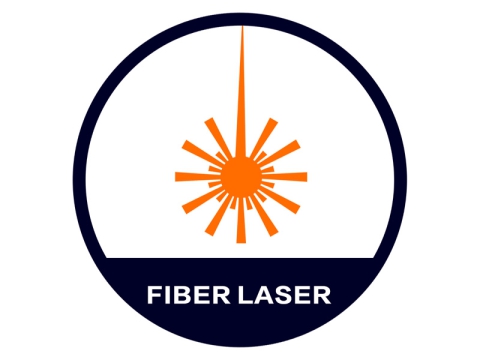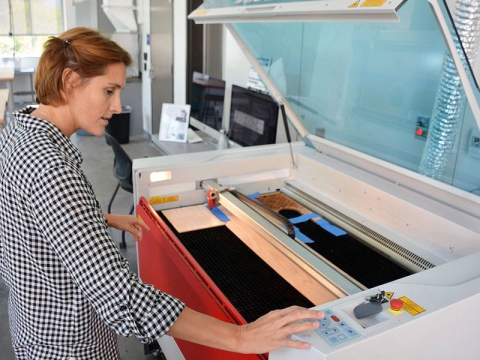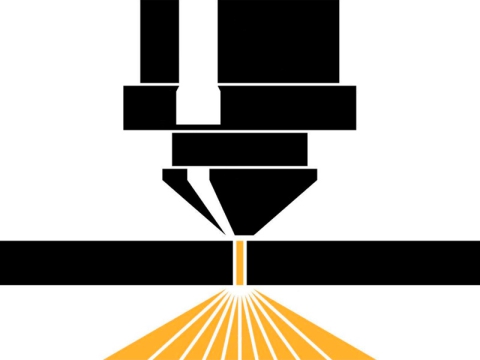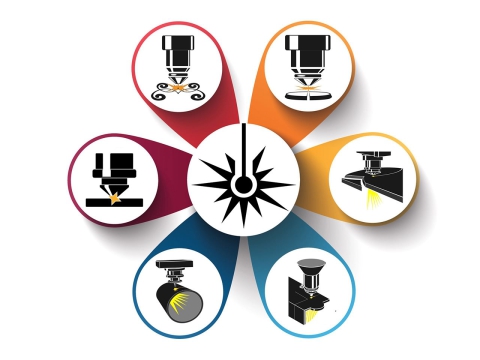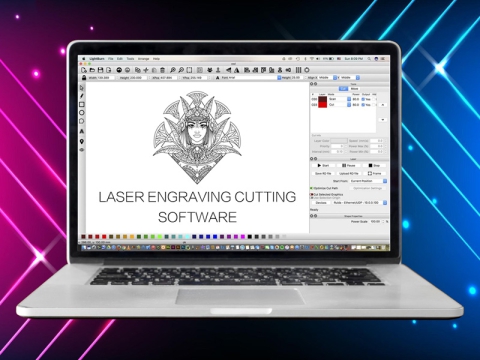Deciding between wire EDM and laser cutting can be a bit tricky, but knowing their differences can help you make the right choice. Both methods offer unique advantages depending on your project. Let’s take a closer look at how each one works and what suits your needs best.
How Does Wire Cutting Work?
Wire cutting is also known as wire EDM- Electrical Discharge Machining. A thin electrically charged wire is used to cut a material, normally metals. The wire is guided on a pre-programmed path and, through electrical discharges, precisely melts the material. It happens in a dielectric fluid, which cools down the workpiece and clears the debris while cutting the material.
This method is widely recognized for its capabilities in cutting complex shapes highly accurately. It's ideal for materials that are difficult to machine with traditional methods, such as hardened steel. However, wire cutting is relatively slow as compared to other cutting methods and works best on thinner materials.
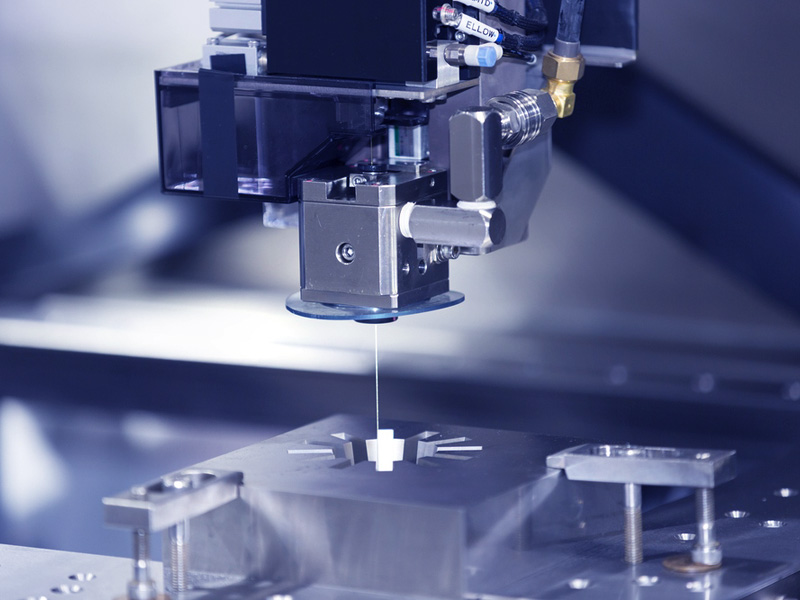
What is Laser Cutting Technology?
A highly concentrated laser beam is used in laser cutting to precisely cut through or etch materials. The material is melted or vaporized by the laser's extreme heat, producing a clean cut. CNC (Computer Numerical Control) systems manage the process, enabling the cutting of elaborate designs and complex shapes with little assistance from humans.
Wood, polymers, metals, and other materials can all be sliced using lasers because of their versatility. Because of its reputation for accuracy and speed, it is perfect for both small- and large-scale production. The technique yields a neat, accurate outcome by reducing the need for extra polishing and providing smooth edges.
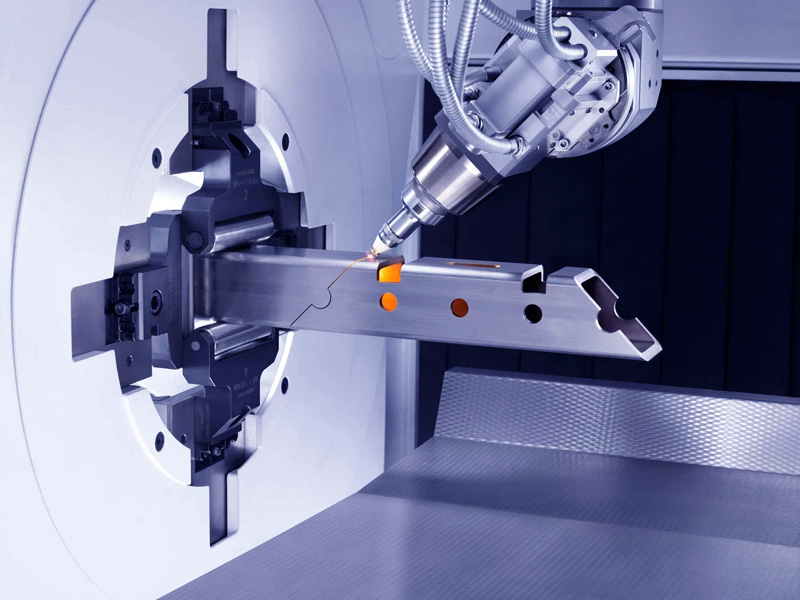
Wire Cut VS Laser Cut: What is the Main Difference?
The two most common techniques applied for precision cutting are wire cut and laser cut. Learning their differences is very critical in selecting the right operation method for a project. Let's compare these two methods.
Cutting Method
Wire cutting is done through a thin, electrically charged wire that cuts the material by sending electrical discharges down the wire and is quite precise. Laser: the laser cutting process with focused beams melts, vaporizes, or burns down material. The laser beam becomes intensely hot and yields the right cut, particularly in lightweight material.
Precision and Accuracy
Wire cutting is known for its exceptional precision, especially for intricate details. It’s ideal for making complex shapes in harder metals like steel. Laser cutting is also highly accurate, but it excels in cutting thin materials and producing smooth edges. For fine, detailed cuts on delicate surfaces, laser cutting is often preferred.
Speed of Cutting
Wire cutting tends to be slower than laser cutting. It’s ideal for smaller, more detailed projects or when working with thicker materials. Laser cutting is faster, particularly for mass production or larger projects. It can quickly cut through various materials, making it efficient for higher-volume work.
Material Suitability
Wire cutting is best for cutting metals, especially thick or hard materials that are difficult to machine with traditional methods. It works well for precision work on materials like tool steel and titanium. Laser cutting is versatile and can work on a wider variety of materials, including metals, plastics, wood, and acrylic.
Edge Quality
Wire cutting typically leaves a rougher edge, which may require additional finishing. Laser cutting, on the other hand, provides clean, smooth edges, reducing the need for further processing. This makes laser cutting ideal for projects where aesthetics and edge quality matter.
Cost and Maintenance
Wire cutting machines are generally less expensive to operate, especially for smaller, intricate projects. However, they require regular maintenance to keep the wire and other components in good condition. Laser cutting machines are more expensive initially but can be more cost-effective in high-volume production due to their speed and efficiency.
Both wire cutting and laser cutting have their unique strengths. The choice between the two depends on your project’s specific requirements, such as material type, precision, speed, and budget.
Applications of Wire Cutting VS Laser Cutting
Each technique has a number of strengths that make it ideal for particular industries and materials. Let's explore in which area each method is applied and how they are applied in real-world scenarios.
Applications of Wire Cutting
• Wire cutting is highly utilized in making molds, dies, and precision tools. It's ideal for cutting hard materials like tool steel, titanium, and other alloys.
• The method of wire cutting allows for intricate details in very small parts, such as in aerospace components, with very minimal distortion.
• Specialized medical devices and parts are cut, which call for high accuracy, such as surgical tools or implants.
• Wire cutting can create complex shapes and fine details required for mechanical parts, often for machinery used in industrial settings.
Applications of Laser Cutting
• Laser cutting is perfect for creating detailed, decorative patterns on materials such as wood, acrylic, and metal, so many times used in signage and custom designs.
• It finds broad applications in the metalworking industry to cut thin metals like stainless steel, aluminum, and copper into accurate shapes and sizes.
• Laser cutting is great for the making of rapid prototypes and small batches of products in industries such as electronics and fashion.
• The woodworking industry uses laser cutting greatly when it comes to creating complex patterns or detailed engravings on wood and plywood.
Wire EDM VS Laser Cutting: Pros and Cons
Both wire cutting and laser cutting are to be used based on what is required in your project. The techniques have their merits and demerits. Let me make a comparative assessment of their pros and cons.
| Wire EDM | Laser Cutting |
|---|---|
| Highly accurate, especially for intricate details | Excellent precision, especially on thin materials |
| Slower compared to laser cutting | Faster, ideal for high-volume production |
| Best for hard metals and thicker materials | Works on a wide range of materials, including metals, plastics, and wood |
| Leaves rougher edges, may require additional finishing | Provides smooth, clean edges with minimal finishing required |
| Generally less expensive for smaller projects | More expensive, but efficient for large-scale production |
| Great for intricate, detailed cuts | Ideal for both simple and complex designs |
| Requires regular maintenance and wire changes | Less maintenance needed, but higher initial cost |
| Primarily used for metals and hard materials | Extremely versatile, handles many materials with ease |
There are advantages and disadvantages to both wire cutting and laser cutting. While laser cutting excels in variety, speed, and clean edge quality for a wider range of materials, wire cutting is ideal for intricate, high-precision operations on hard materials. The material, project size, and desired finish should all influence your decision.
How to Choose the Right Cutting Method for Your Project?
Selecting the appropriate cutting method for your project can significantly impact the quality, speed, and cost-effectiveness of production. Here's how to make the right choice based on your specific needs.
Consider the Material Type
The material you're working with plays a major role in determining the best cutting method.
• Wire Cutting: Ideal for cutting hard metals like tool steel, titanium, and alloys that are difficult to machine using traditional methods.
• Laser Cutting: Highly versatile and can cut through a range of materials, including metals, plastics, acrylic, and wood. It's best for thin to medium thickness materials.
Precision and Complexity of the Design
If your project involves intricate or detailed cuts, precision is key.
• Wire EDM: Offers superior precision for complex and delicate shapes, making it ideal for intricate designs, especially on hard materials.
• Laser Cutting: Also provides excellent precision but is particularly well-suited for projects that require clean and sharp edges on less dense materials.
Cutting Speed and Volume
Consider how quickly you need your project completed and whether you're working on a high-volume task.
• Wire Cutting: While highly precise, wire cutting tends to be slower, making it suitable for smaller, one-off projects or low-volume production.
• Laser Cutting: Faster than wire cutting, laser machines are ideal for high-volume, quick-turnaround production, making them a great choice for businesses needing efficiency.
Cost and Budget
Your budget should factor into the decision as well.
• Wire EDM: Typically lower in cost for smaller operations or projects, but maintenance can add up over time.
• Laser Cutting: Higher initial investment, but offers speed and versatility that can save costs in the long run, especially in large-scale production.
Maintenance and Upkeep: Wire Cut VS Laser Cut
Both wire cutting and laser cutting require regular maintenance to ensure their efficiency and longevity. However, the maintenance requirements for each are different, given the underlying technology and usage. Here's a breakdown of the maintenance considerations for each.
Wire Cutting Maintenance
Wire cutting machines require more frequent maintenance due to the nature of the wire and the electrical components involved.
• Wire Replacement: The wire, which wears out in the process of cutting, has to be replaced regularly, especially when cutting tough materials. The quality of the wire also affects the precision of the cut.
• Cleaning and Calibration: The wire guides and electrical components of the machine have to be cleaned and calibrated periodically for smooth operation. Dirt, debris, or any misalignment may affect the quality of the cut.
• Cooling System: Wire cutting machines have a cooling system that often maintains the temperature of the wire. Regular maintenance in the cooling system is necessary in order to avoid overheating and sustain the performance during cutting.
Maintenance for Laser Cutting
Laser-cutting machines are more autonomous and tend to require less frequency in maintenance; on the same vein, however, there are instances when they demand frequent attention, just like any machine.
• Laser Beam Alignment: This may be problematic with continuous use, like in lens misalignment from prolonged exposure. Regular calibration and realignment are supposed to maintain peak performance with such machines.
• Cleaning of Lenses and Mirrors: The lenses and mirrors that focus the laser beam should be cleaned periodically so that contaminants do not impede the beam and compromise a cut.
• Cooling System: It is very important to do periodical checks of a cooling system that keeps the temperature of the laser close to the ambient temperature in order to avoid overheating and ensure efficient operation.
• Software Updates: Since laser cutting machines are integrated with computer software, it is important to update them frequently for smooth operation and using new features.
While both techniques demand regular maintenance, wire cutting requires more manual intervention in the form of wire changes and cleaning, whereas laser cutting requires more alignment, cleaning of lenses, and updating of software for its operation-much more automated, but with regular checks for details.
